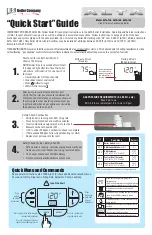
106636-02 - 12/19
6
X-2
Installation, Operating & Service Manual
A. If an Existing Boiler is Removed:
When an existing boiler is removed from a
common venting system, the common venting
system is likely to be too large for proper venting
of the appliances remaining connected to it.
At the time of removal of an existing boiler, the
following steps shall be followed with each
appliance remaining connected to the common
venting system placed in operation, while the
other appliances remaining connected to the
common venting system are not in operation:
1. Seal any unused openings in the common
venting system.
2. Visually inspect the venting system for proper
size and horizontal pitch and determine
there is no blockage or restriction, leakage,
corrosion, and other deficiencies which could
cause an unsafe condition.
3. Insofar as is practical, close all building doors
and windows and all doors between the space
in which the appliances remaining connected
to the common venting system are located and
other spaces of the building. Turn on clothes
dryers and any appliance not connected to the
common venting system. Turn on any exhaust
fans, such as range hoods and bathroom
exhausts, so they will operate at maxi mum
speed. Do not operate a summer exhaust fan.
Close fireplace dampers.
4. Place in operation the appliance being
inspected. Follow the Lighting (or Operating)
Instructions. Adjust thermo stat so appliance
will operate continuously.
5. Test for spillage at the draft hood relief opening
after 5 minutes of main burner operation. Use
the flame of a match or candle, or smoke from
a cigarette, cigar or pipe.
6. After it has been determined that each
appliance remain ing connected to the common
venting system properly vents when tested as
outlined above, return doors, win dows, exhaust
fans, fireplace dampers and any other gas-
burning appliance to their previous condition of
use.
7. Any improper operation of the common venting
system should be corrected so the installation
conforms with the
National Fuel Gas Code
,
ANSI Z223.1/NFPA 54. When resizing any
portion of the common venting system, the
common venting system should be resized
to approach the minimum size as determined
using the appropriate tables in Chapter 13
of the
National Fuel Gas Code
, ANSI Z223.1/
NFPA 54.
3
Removing Existing Boiler
4
Unpack Boiler
CAUTION
Do not drop boiler. Do not bump boiler jacket
against floor.
A. Move boiler to approximate installed position.
B. Remove all crate fasteners.
C. Lift outside container and remove with all other
inside protective spacers and bracing. Save two
of the wooden slats from the container sleeve for
use in Steps E and F.
D. Remove all boiler hold-down fasteners.
E. Tilt the boiler to one side and slide a wooden slat
under the two raised feet.
F. Tilt the boiler to the other side and slide another
wooden slat under the two raised feet.
G. Slide the boiler forward or backward off the skid
using the two wooden slats as runners.
H. Move boiler to its permanent location.
!







































